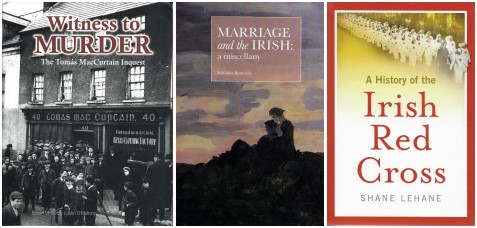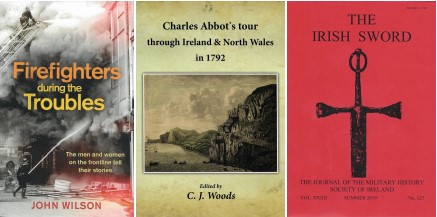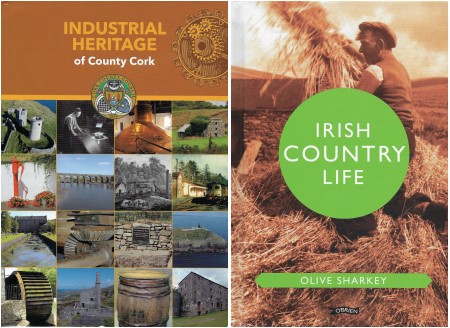BOOKWORM
Published in Book Reviews, Book Reviews, Issue 4 (July/August 2020), Reviews, Volume 28By Joe Culley
@TheRealCulls
The decade of centenaries trundles on. We have entered the final third, the violence ramps up and a bitter conclusion in vicious civil war comes faintly into view.
 Of course, we are immersed in our own historic, heart-breaking social upheaval right now. Many of us have cried in the last few months, whether from personal loss or fear or general anxiety. And yet even the enormous horror of the Spanish ’Flu was consigned to history so quickly that it barely made it into the records. As it followed immediately at the end of the war, perhaps people were just too tired of death to dwell on it all.
Of course, we are immersed in our own historic, heart-breaking social upheaval right now. Many of us have cried in the last few months, whether from personal loss or fear or general anxiety. And yet even the enormous horror of the Spanish ’Flu was consigned to history so quickly that it barely made it into the records. As it followed immediately at the end of the war, perhaps people were just too tired of death to dwell on it all.
So we can speculate about how the Great Distancing will be assessed in 100 years’ time. Perhaps in 2120 the academics will be more focused on the centenary of the collapse of democracy, which led to a century that also featured the First Submersion, the two Peasants’ Food Revolts and the sporadic Smart Uprisings against the surveillance state. It will certainly all look different when viewed from Mars. But I digress.
So, it is 1920 and the War of Independence is really heating up. One of the more infamous incidents early on is the murder of the lord mayor of Cork, Tomás MacCurtain. Early in the morning of Saturday 20 March, just after 1am, a gang of armed men, their faces blackened, gather outside his home in Blackpool. They knock on the door; when his wife, Elizabeth or Eilish, opens it, several burst through and go directly upstairs to his room—the house has been raided regularly—and with little delay shoot the man. He does not die immediately, but is dead by the time the doctor arrives around twenty minutes later. It is his 36th birthday.
Remarkably, the inquest into the mayor’s assassination opens later that evening at 5pm, upstairs above O’Leary’s pub in Blackpool. On the surface, the proceedings do not seem to have the most impartial start. The coroner, solicitor J.J. McCabe, opens by saying that they ‘met under very distressing circumstances—to hold an inquiry into the circumstances of the death of their friend, Mr Tomás MacCurtain’.
We know this because the Irish Examiner has published Witness to murder: the Tomás MacCurtain inquest, the full transcript of the proceedings, which lasted fifteen days and to which 90 witnesses were called. Not surprisingly, it’s a telling document in many ways. The inquest, which soon moved to City Hall, was overseen by Volunteers, even though the ‘Authorities’, as they are termed, had legal representation and the RIC attended in number.
Mrs MacCurtain was among the first witnesses. When asked by her counsel whether her husband was still alive when the priest arrived, she said: ‘I thought he was dead, but I addressed him and said: “Cheer up, boy; the priest will be here soon; you are dying for Ireland and die like a soldier”.’ For their part, the many RIC witnesses were consistent in their testimony that not nobody never left the barracks that night, no sir.
You’ll have to read the book to discover the verdict.
Are you familiar with Pus Monday? How about Cock Tuesday? Would your name be found on the Skellig List? The answers lie in Clodagh Tait’s brief and entertaining essay ‘Single-shaming’ in Marriage and the Irish: a miscellany. Edited by Maynooth Professor Salvador Ryan for Wordwell, the anthology includes 79 engaging pieces stuffed into a mere 300 pages. Do the maths: allowing for some fine illustrations, each piece is really a bite-sized three pages, perfect for simply dipping into.
Topics range from early written Irish from around the year 800—the word lánamnas, referring to marriage—to contemporary statistics for various types of cohabitation. And Prof. Ryan knows how to grab your attention: essay titles include ‘Penis captivus: a strange tale of sexual taboo in medieval Ireland’; ‘Impotence, violence, dowries and drinking: married couples in court in sixteenth-century Ireland’; and ‘The poultry instructress and the papal count’. Patrick Comerford weighs in on ‘The oldest bishop in Christendom’, his eighteen-year-old wife and the origins of Castle Leslie.
Despite the surface frivolity, there’s a lot of good history bursting through. This is the second in a planned trilogy on birth, marriage and death, following 2016’s Death and the Irish: a miscellany. That slipped by me, but on the evidence of this volume I’ll be sure to grab a copy.
Shane Lehane’s impressive A history of the Irish Red Cross is described as ‘the first comprehensive and independent study’ of the Irish Red Cross Society. Founded in 1939, the society was initially staffed primarily by women and came to be seen, rightly or wrongly, as Catholic and middle-class. In the mid-1940s the society, somewhat controversially, and closely watched by Archbishop McQuaid, led the anti-tuberculosis campaign. While examining its often-pioneering work, Lehane also directly addresses the society’s weaknesses, particularly periods of overbearing management in the closing decades of the last century. There is also a surprising—to me—examination of its role in the Arms Crisis. This is likely to be the standard reference book for some time.
 Former Belfast fire-fighter John Wilson has produced an important piece of social/oral history in Firefighters during the Troubles: the men and women on the frontline tell their stories. Wilson interviewed 32 of his colleagues, and their stories are a compelling mixture of the mundane and the horrific, infused with an overwhelming camaraderie.
Former Belfast fire-fighter John Wilson has produced an important piece of social/oral history in Firefighters during the Troubles: the men and women on the frontline tell their stories. Wilson interviewed 32 of his colleagues, and their stories are a compelling mixture of the mundane and the horrific, infused with an overwhelming camaraderie.
In 2009 Four Courts Press published C.J. Woods’s Travellers accounts as source-material for Irish historians. Now Woods has focused his attention on the previously unpublished Charles Abbot’s tour through Ireland and North Wales in 1792.
Among the essays in the latest Irish Sword is Harman Murtagh’s study of the French dimension in the Irish Jacobite army, and a look at peace-day parades here in summer 1919.

Industrial heritage of County Cork does exactly what it says on the tin. Focused on developments in the eighteenth and nineteenth centuries, this survey examines topics such as where the energy came from, the architecture of the burgeoning industrial processes and transport infrastructure. It includes specific studies of 30 sites, such as the Mallow turnpike, Schull corn mill and the Overton cotton mills.
O’Brien Press has issued a revised edition of Olive Sharkey’s Irish country life, which it first published twenty years ago. The book began as a 1985 memoir of growing up in Westmeath.
Kieran McCarthy and John O’Mahony, Witness to murder: the Tomás MacCurtain inquest (Irish Examiner, €22.99 hb, 230pp, ISBN 9781527259058).
Salvador Ryan (ed.), Marriage and the Irish: a miscellany (Wordwell, €25 pb, 300pp, ISBN 9781916492226).
Shane Lehane, A history of the Irish Red Cross (Four Courts Press, €40.50 hb, 320pp, ISBN 9781846827877).
John Wilson, Firefighters during the Troubles: the men and women on the frontline tell their stories (Blackstaff Press, £12.99 pb, 208pp, ISBN 9781780732343).
C.J. Woods (ed.), Charles Abbot’s tour through Ireland and North Wales in 1792 (Edmund Burke Publishers, €20 pb, 115pp, ISBN 9780946130498).
Kenneth Ferguson (Hon. Ed.), The Irish Sword: Journal of the Military History Society of Ireland, Summer 2019 (available at mhsi.ie, 120pp, ISSN 00211389).
Industrial heritage of County Cork (Cork County Council, 220pp, ISBN 9780993596964).
Olive Sharkey, Irish country life (O’Brien Press, €12.99 hb, 160pp, ISBN 9781788491846).
















